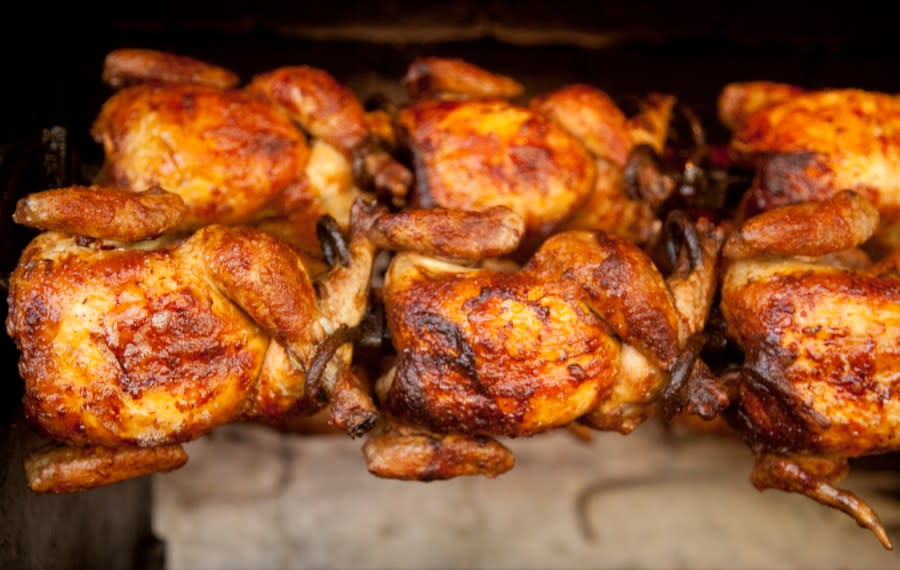Are rotisserie chickens good for you? Experts break down ingredients

KNOXVILLE, Tenn. (WATE) — We’ve all done it: stopped by the store on the way home to pick up something quick for dinner. A lot of times that “something” is a rotisserie chicken. It’s a healthy choice, right?
It really depends on what is added to the bird before cooking. Nexstar’s WATE recently bought three cooked chickens from different grocery stores to get a closer look at the ingredients, and get some analysis from nutritionist Krystal Goodman. The first thing Goodman pointed out was the salt content.
“These do have quite a bit of sodium,” Goodman explained. “That’s the number one thing you want to look for [on the label].”
Salt is a mineral we all need, but in excess it can cause problems for people with high blood pressure who have to watch their sodium. It’s a prominent ingredient in nearly every store-bought rotisserie chicken.
“Salt provides flavors and it’s also a critical component to the flavor of food products,” said Dr. Rob Williams, head of the University of Tennessee’s Department of Food Science. “It can also help somewhat with water-holding capacity in the meat, so it actually helps them become more juicy.”
WATE purchased one chicken for $7.99. Salt was the first added ingredient. Here’s the full list:
Salt
Dehydrated garlic
Sugar
Dehydrated onion
Dehydrated red bell pepper
Parsley flakes
Natural flavors
Tricalcium phosphate
Soybean oil
Goodman said soybean oil is not good for you.
“It’s very inflammatory to the whole body, honestly, your gut especially, but you want to look for things like olive oils, avocado oils, coconut oil, all those are going to be better for our system in general and not as inflammatory,” Goodman said.”
WATE didn’t find any of the oils mentioned in the other chickens studied. Another chicken was purchased for $8.99 and contained:
Water
Vinegar
Sea salt
Dextrose
Carrageenan
Sugar
Turbinado sugar
Corn syrup
Carrageenan is a chemical compound injected into some pre-cooked poultry to tenderize it and keep it juicy. Goodman said, “What it can do is inflame the gut as well, so it’s another one to really try to stay away from.” Carrageenan is banned in Europe, but not in the United States.
However, Williams said, “I’m not particularly worried about it. Based on the studies that I have read, it seems that some people have reported a sensitivity to carrageenan.”
The third chicken was the most expensive at $9.99 and it only had two additional ingredients:
Water
Sea salt
“Sea salt is not going to cut down on your sodium content,” Goodman said. “So you’re still going to get the same per teaspoon because people think, ‘Oh, sea salt, it’s going to cut down on the sodium,’ but really, you’re just getting more minerals that way because it’s more of a natural salt.”
This third chicken might be the obvious take-home choice because it has the fewest added ingredients. However, Goodman recommends making your own at home.
“You can buy a full chicken somewhere and always bake it yourself. Put your own ingredients in. You know what’s going into it,” said Goodman.
According to Williams, grocery stores are required to bake rotisserie chickens to 165 degrees. Once cooked, they’re supposed to sit on the warning shelf no more than four hours at 135 degrees.
Copyright 2024 Nexstar Media, Inc. All rights reserved. This material may not be published, broadcast, rewritten, or redistributed.
For the latest news, weather, sports, and streaming video, head to PIX11.

